Review Article - (2024) Volume 15, Issue 1
Received: 15-Feb-2024, Manuscript No. AASRFC-24-19061; Editor assigned: 20-Feb-2024, Pre QC No. AASRFC-24-19061 (PQ); Reviewed: 05-Mar-2024, QC No. AASRFC-24-19061; Revised: 13-Mar-2024, Manuscript No. AASRFC-24-19061 (R); Published: 21-Mar-2024, DOI: 10.36648/0976-8610.15.1.45
Background: Endobronchial cryotherapy is a useful tool in a bronchoscopy suite. This study was conducted to compare the effects of endobronchial Cryotherapy combined with Chemotherapy (Cr +CT) in advanced, centrally located lung cancer versus only Chemotherapy (CT) over 18 months.
Materials and methods: Patients with advanced lung cancer were enrolled in two groups: Patients receiving Cr+CT and patients receiving CT. In the Cr+CT group, 48 hours prior to every chemotherapy cycle, cryoptherapy was done on the lesion. EORTC Quality of Life (QOL) assessment using LC-13 and C-30 modules was done at every cycle. RECIST assessment was done at every third cycle of either therapy.
Results: This study included 30 patients (males-76.6%) with mean age (± Standard Deviation (± SD))=60.5 (± 9.6) years. 86.6% patients in both groups had non-small cell lung cancer. In Cr+CT group, Response Rate (RR)=60% and for CT group, RR=40% (P>0.05). Non Progresive Disease Rate (NPDR) for Cr+CT=90%, for CT=66.6% (p<0.05).
The Quality of Life (QOL) variable mean scores plotted as Pearson’s correlation coefficient (R). Significantly superior results were observed in Cr+CT group for dyspnea severity, cough and hemoptysis (P<0.05). Similarly, Cr+CT group showed higher R for global functioning, physical functioning. Role functioning and social functioning and insomnia versus CT group (p<0.05).
Conclusion: Addition of cryotherapy to chemotherapy led to higher RR and NPDR. It improved overall QOL as well as respiratory symptoms. It is a safe and effective tool for palliation as well as definitive management.
Endobronchial cryotherapy; Non progresive disease rate; Chemotherapy; Quality of life
Lung cancer is the most frequently diagnosed malignancy in the world, leading to the largest number of cancer related deaths. According to Globocan estimate, lung cancer is the third most common cancer in India (incidence 5.0 per 100000) and the fourth most common cause of cancer related deaths (mortality 4.7 per 100000) [1]. About 30% of all lung cancers are centrally located, i.e. endobronchial obstructive tumours. Eighty five percent (85%) of endobronchial lung cancer tumours are considered as inoperable when diagnosis is established and therapy remains largely palliative.
Pulmonary symptoms that may require palliation in patients who have lung cancer include those caused by the primary cancer itself viz. dyspnea, wheezing, cough, hemoptysis, chest pain or locoregional metastases within the thorax superior vena cava syndrome, tracheoesophageal fistula, pleural effusions, ribs and pleura. Respiratory symptoms can also result from complications of lung cancer treatment or from comorbid conditions.
In order to alleviate symptoms and improve quality of life for patients of advanced stage, inoperable carcinoma, where the possibility of surgery has been eliminated, other palliative measures must be considered. These treatments include chemoradiation, laser therapy, photodynamic therapy, brachytherapy, Radiofrequency Ablation (RFA) and cryotherapy [2].
Endobronchial Nd:YAG laser therapy, which has been widely used in past and electro-cauterization are effective and instantly open up the airway, but are more likely to result in such complications as airway perforation. Also, photodynamic therapy is expensive and may result in complications, including hemorrhage or local burns [3].
Modern cryotherapy started with the application of the Joule- Thompson effect (temperature drop due to the sudden expansion of a gas from a high-to a low-pressure region) in clinical medicine [4]. During the next decades, many cryosurgical interventions were developed in most medical specialties including dermatology, gynaecology, urology, neurosurgery, stomatology, ophtalmology and gastroenterology. Due to the relative inaccessibility of the tracheobronchial tree, cryotherapeutic techniques were relatively late to develop. The first report of patients with malignant bronchial obstruction treated by means of cryotherapy were published in the 1969 by Grana et al [5]. Increasing experience with cryotherapeutic interventions in the trachea-bronchial tree was obtained in Europe [6,7]. Main indications for bronchoscopic cryotherapy included the treatment of symptomatic obstructive lesions of the central removal of foreign bodies, mucus plugs or blood clots and treatment of granulation tissue [3].
Cellular damage is the result of a complex combination of mechanisms in all sequences of the freeze-thaw cycle. Several mechanisms, including protein denaturation, cell destruction caused by osmotic shifts in intracellular and extracellular water and tissue ischemia from microvascular thrombosis, are known to cause cellular injury in cryotherapy.
The advantages of endobronchial cryotherapy are that it has proven effectiveness with minimal complications. It is relatively easy to use and economical in comparison with other techniques. Patients tolerate the procedure very well and show a significant improvement in symptoms at the end of the procedure [8,9]. Quality of life in terms of performance score improvement and symptom control is also a major advantage of using cryotherapy in conjunction with other palliative methods [10].
Recent research puts a light beyond local control of tumour by cryotherapy and looks into synergistic actions of cryotherapy with other systemic modalities. Forest, et al. in human lung and animal models stated that administration of cryotherapy before chemotherapy increases the chemosensitivity of tumour through multiple immunologic factors and increased VEGF expression leading to better penetration of chemotherapy drugs into the tumour tissue [11].
A 2018 research by Abdo, et al. has recently shown that cryotherapy exerted an abscopal effect i.e., the cryoablated tissue fragments acted as vaccines and induced T cell immunity against the growing cancer cells when combined with immunotherapy, giving better results over palliative treatments alone. Hence, cryotherapy is a valuable interventional tool to diagnose, palliate and even potentiate other treatments for lung cancer. To our knowledge, no such study has been conducted in an Indian population and thus we aim to provide insights into the effects of this modality in comparison with conventional chemotherapy.
Aims and objectives
• To compare the tumour response in lung cancer patients
who received at least three cycles of chemotherapy versus
combined cryo-chemotherapy.
• To compare the quality of life in both groups.
Cryotherapy was first mentioned in the papyrus papers around 3000 BC when Egyptians and then Hippocrates used it to treat skull fractures and infected wounds [12]. Modern cryotherapy for lung cancers was used initially in 1850 when James Arnott described-destroying the vitality of the cancer cell utilizing an iced salt solution that reached -24°C [13].
Homasson, et al. performed three cycles of -80â?? cryotherapy in 27 lung cancers including patients who underwent preoperative radiation treatment (n=5), chemotherapy (n=3) and chemoradiation therapy (n=3). The procedure was repeated 4-6 days later and the response rate was evaluated. The results showed that the response rate of malignant tumours was 61.9%.
Maiwand, et al. reported that a total of 521 consecutive patients with advanced obstructive tracheo-bronchial malignant tumours underwent cryotherapy.
The tumour was shrunk or eradicated and lung atelectasis was improved. Hemoptysis, cough, dyspnoea and chest pain were improved by at least one class in 76.4%, 69.0%, 59.25% and 42.6% of symptomatic patients respectively and improvement in one or more symptoms was demonstrated in 86% of patients. Median survival was 8.2 months and 1 and 2-year survival was 38.4% and 15.9%, respectively.
Asimakopoulous, et al. compared the efficacy between at least two sessions and one session of endobronchial cryotherapy [14]. Group A including 172 patients with at least two sessions of endobronchial cryotherapy was compared with group B including 157 patients with one session of cryotherapy for primary or metastatic obstructive lung carcinoma. Results showed that symptoms of dyspnea, cough and hemoptysis were significantly reduced in both groups after cryotherapy, although group A benefited more than group B. Lung function was improved significantly in group A. The mean Karnofsky Performance Score (KPS) had a similar increase in both groups. The mean survival was 15 months (median, 11 months) for group A and 8.3 months (median, 6 months) for group B. Univariate regression analysis showed that no particular patient or tumour characteristic was associated with reduction of symptoms. Patients who had combined cryotherapy and external beam radiotherapy showed longer survival.
Yu, et al. investigated the effect of endobronchial cryotherapy in 92 patients with central bronchial carcinoma using CO2 as the cryogen [15]. Tumour Complete Remission (CR) achieved in 51 (55.4%) patients and Partial Remission (PR) in 31 (37.7%) patients. Cough, hemoptysis, dyspnoea and chest pain were improved in 73.9%, 98.0%, 75.0% and 50.0% of the patients. Obstructive pneumonia was controlled in 87.2% of the patients.
Forest, et al. studied the effects of cryochemotherapy in a human lung adenocarcinoma, if it presents a benefit compared to the separate treatments and if cryotherapy allows a tumour retention of the drug. Cells from the A549 cell line were xenografted into SCID mice. Tumours were treated by cryotherapy, chemotherapy (injection of Vinorelbine, Navelbine or both) and were studied morphologically at variable time points. Apoptosis was analysed by IHC staining of cleaved caspase-3 and by TUNEL. Intratumour navelbine concentration was assessed by high performance liquid chromatography. Necrosis was important 2 h after cryochemotherapy (45% of the tumour surface) and at the later time points. Expression of cleaved caspase-3 was not significantly different from that of untreated tumours, except at the time point of 2 h where it was maximal (58%). Thus showing that cryotherapy increased the chemosensitivity of the tumour within 2 hours of the application. Also, cryotherapy induced apoptosis in the target tumour cells.
Niu, et al. reported the results of a total of 840 patients with non-small cell lung cancer who underwent percutaneous cryotherapy [16]. Based on the TNM staging, there were 122 patients with stage IIa, 462 with IIb, 160 with IIIa, 64 with IIIb and 32 with IV.
A total of 1,174 procedures of cryotherapy were performed for 840 patients with lung cancer. There were 140 and 66 patients who underwent additional single and two sessions of cryotherapy procedure, respectively, for recurrent tumours in the lungs. There were 62 patients who underwent additional session of cryotherapy for liver metastases. During the follow-up, Complete Remission (CR) was observed in 86 patients (14.4%), Partial Remission (PR) in 588 patients (70.0%). However, the tumour recurred in 47.2% of the patients during a median follow-up of 34 months (range, 4 to 63 months), in the lungs, liver, brain and bone. The recurrence at cryosite accounted 28.3% of cases. During the follow-up, the median survival of all patients was 23 months (range, 5-61 months) with 1, 2, 3, 4 and 5-year overall survival of 68%, 52%, 34%, 26% and 17%, respectively.
Zhou, et al. in the same hospital observed therapeutic effects of cryotherapy combined iodine-125 seeds implantation in 140 patients with advanced lung cancer [17]. After 6 postoperative months the patients had CR of 16.8%, PR of 70.1%, Stable Disease (SD) of 7.4% and Progressive Disease (PD) of 5.7%. The half-year and one-year survival rates were 94.3% and 65.7% respectively.
Wang, et al. reported their initial experience with percutaneous cryotherapy of 234 tumours in 187 patients [18]. They treated a mixed cohort of 196 primary and 38 metastatic lung cancers, achieving complete ice ball coverage of tumour in 98.7% and 87.2% for peripheral tumours smaller than 4 cm and larger than 4 cm, respectively. Tumour size and location were significant independent variables for tumour ice coverage. At 6 month, 86% of the treated tumours were stable or smaller than the original tumours on CT scans. The follow-up periods were too short to determine any survival benefit; however, palliative benefits of cryotherapy were noted in terms of the Karnofsky performance status scale and general health status.
Forest, et al. the effects of cryotherapy combined with chemotherapy were studied in terms of cryo-induced angiogenesis in SCID mice. The argument that cryo-induced angiogenesis will futher enhance the resolution of tumour by facilitating the chemotherapy drug reach the tumour cells better. Cells from the A549 cell line were inoculated into SCID mice. Tumours were treated by cryotherapy (nitrous oxide cryoprobe), chemotherapy (injection of vinorelbine) or both. Tumour growth was studied in each group and the tumor growth inhibition (T/C) ratios were compared. Tumours treated by cryochemotherapy presented a significantly reduced volume and the lower T/C ratio, confirming the benefit of a combined treatment. A late cryo-induced angiogenesis was observed 8-15 days after treatment i.e., expression of VEGF increased from 13% in untreated tumours to 77% and 70%, respectively.
Schumann, et al. did 225 bronchoscopic interventions that were done as cryorecanalization with a flexible cryoprobe [19]. All patients had symptomatic airway stenosis. We determined the endoscopic success rate and safety (bleeding and perforation) of the procedure. Successful cryorecanalization was achieved in 205 (91.1%) of 225 patients.
The flexible cryoprobe was used with all patients, in most patients in combination with flexible bronchoscopy and only in a minority (n=31, 13.8%) in combination with a rigid bronchoscope. Additional interventional techniques used were endobronchial stents (n=11, 4.9%) and argon plasma coagulation (n=37, 16.4%). Mild bleeding occurred in 9 (4.0%) patients and severe bleeding never occurred. It was concluded that cryorecanalization with the flexible cryoprobe for treatment of symptomatic endobronchial tumour stenosis is a safe technique with a high success rate and immediate treatment effect.
Zhikai Z, et al. used combined percutaneous CT guided and endobronchial cryotherapy in 47 patients with unresectable Central Type Lung Cancer (CTLC) and within 3 days after treatment, ventilatory capacity and performance status had obviously increased and cough, signs of dyspnea, hemoptysis and atelectasis improved significantly [20]. The PFS of medium or well differentiated CTLC (15 ± 8 months) was significantly longer than that of poorly differentiated CTLC (7 ± 3 months, P<0.0001). This asserts the use of cryotherapy as a safe as well as effective palliative technique for endobronchial lung cancer.
Yuanying Y, et al. conducted a retrospective study of 161 patients to evaluate the therapeutic effects of combining cryotherapy, chemotherapy and Dendritic Cell-activated Cytokine-Induced Killer cells (DC-CIK) immunotherapy for non-small cell lung cancer. 5 year followup Overall Survival (OS) of patients who received comprehensive cryotherapy was (median OS, 20 months; n=86) significantly longer than that of patients who did not receive cryotherapy (median OS, 10 months; n=75; P<0.0001).
Five treatment combinations were selected. Chemotherapy (n=44) chemo-immunotherapy (n=31), cryo-chemotherapy (n=32), cryo-immunotherapy (n=21) and cryo-chemoimmunotherapy (n=33). A combination of cryotherapy with either chemotherapy or immunotherapy lead to significantly longer OS (18 months and 17 months, respectively) compared to chemotherapy and chemo-immunotherapy (8.5 months and 12 months, respectively; P<0.001). In conclusion, the use of cryotherapy when combined with chemotherapy yielded as much as double the OS and hence a promising palliative intervention.
Abdo, et al. in a recent study stated that cryotherapy ablation of a solid tumour is mechanistically similar to a vaccination where hundreds of unique antigens from a heterogeneous population of tumour cells derived from the invading cancer are released [21]. However, releasing tumour-derived selfantigens into circulation may not be sufficient enough to overcome the checkpoint escape mechanisms some cancers have evolved to avoid immune responses. The potentiated immune response caused by blocking tumour checkpoints designed to prevent programmed cell death may be the optimal treatment method for the immune system to recognize these new circulating cryoablated self-antigens.
Preclinical and clinical evidence exists for the complementary roles for Cytotoxic T-Lymphocyte-Associated protein (CTLA-4) and PD-1 antagonists in regulating adaptive immunity, demonstrating that combination immunotherapy followed by cryotherapy provides a more targeted immune response to distant lesions, a phenomenon known as the abscopal effect. It was proposed that when the host‘s immune system has been primed with combined anti-CTLA-4 and anti-PD-1 adjuvants prior to cryotherapy, the preserved cryoablated tumour antigens will be presented and processed by the host‘s immune system resulting in a robust cytotoxic CD8+ Tcell response.
Study Design
This was an observational, hospital based study. This study was carried out among the patients with locally advanced metastatic centrally located lung cancer attending the institute lung cancer clinic in the national institute of tuberculosis and respiratory diseases, New Delhi, from November 2017 to February 2019.
Study Population
All eligible patients were enrolled under the study at the lung cancer clinic in the national institute of tuberculosis and respiratory diseases, New Delhi.
Study Period
1st November 2017 to 28th February 2019.
Sampling Method
Once a week, lung cancer clinic is held at NITRD, New Delhi. Patients with centrally located, advanced lung cancer were identified and after thorough information regarding the study, were taken under intervention according to the choice of the patients. The patients who completed at least three cycles of therapy were enrolled in the study and observed throughout the study period for outcomes. We found 57 patients with centrally located advanced lung cancer during the study period, of which 30 patients could be enrolled after fulfillment of inclusion and exclusion criteria.
We used ERBECryo CA SN C-1080 machine which used compressed Nitrous Oxide (N2O) as the freezing source. We used 2.4 mm cryoprobe by ERBE Systems CA. Fibreoptic bronchoscopy was carried out by Fujinon EB-530H bronchoscope system (Figures 1 and 2).
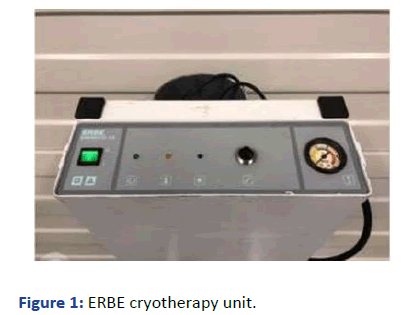
Figure 1: ERBE cryotherapy unit.
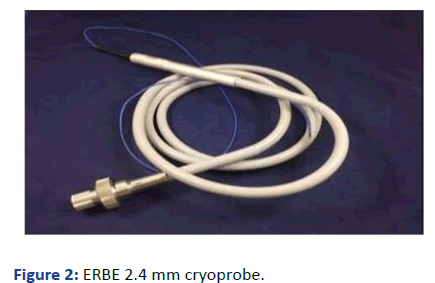
Figure 2: ERBE 2.4 mm cryoprobe.
Cryotherapy procedure was carried out under conscious sedation and local anesthesia. Vital signs were monitored continuously. Rapid freezing and slow thawing method was applied. Tumour was frozen under vision for 6-10 seconds. 6-7 such freezing sessions were given at different spots around the tumour. Both tip freezing and tangential freezing techniques were used. Bleeding if any, was contained with appropriate control measures (Figures 3-5).
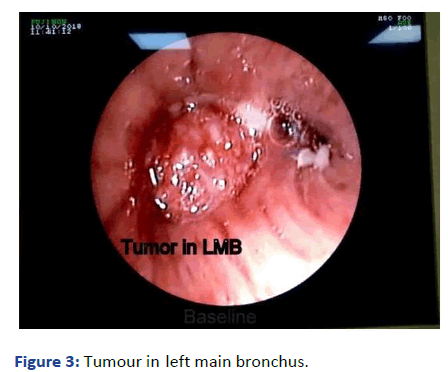
Figure 3: Tumour in left main bronchus.
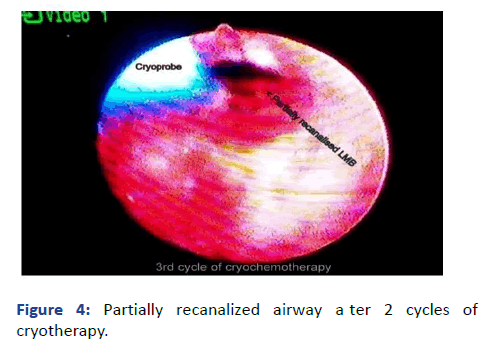
Figure 4: Partially recanalized airway a ter 2 cycles of cryotherapy.
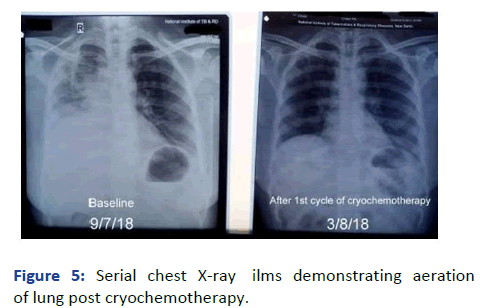
Figure 5: Serial chest X-ray ilms demonstrating aeration of lung post cryochemotherapy.
Sample Size
The approximate number of advanced centrally located lung cancer patients attending cancer clinic is 4-6 per month. Since mortality and morbidity is high, we expected 50-70 patients to be screened and 25-35 patients to be enrolled consecutively in the study period after application of inclusion and exclusion criteria.
Inclusion criteria:
• Patients with centrally located advanced lung cancer
irrespective of age and gender.
• Patients who were fit for undergoing either chemotherapy
and/or cryotherapy or both.
• Patients who consented to the participation in the study.
• Patients who completed at least three cycles of
chemotherapy.
Exclusion criteria:
• Patients not willing to participate in the study.
• Patients who were unfit for either interventions.
• Patients who withdrew consent.
Methodology
• Patients with centrally located lung cancer attending the
cancer clinic at NITRD were evaluated for anticancer chemotherapy and clinical, radiological and pathological
examination.
• Eligible patients were then given a patient information
sheet.
• Patients were thoroughly informed about the nature of
the procedure and the study design in a language they
understood and according to their choice, they were
assigned a study group namely combined cryo
+chemotherapy or chemotherapy.
• Patients who gave consent to the participation in the
study were given two questionnaires to fill at every visit.
Illiterate patients were interviewed.
• Patients who received at least three cycles of
chemotherapy were enrolled in the study.
• Patients were followed up till the end of the study period.
The patients in the cryotherapy group in whom the
intaluminal mass had completely resolved were not given
additional cryotherapy cycles, but were given
chemotherapy and were followed till the end of the study
period.
Statistical Methods
The data from the patients at enrolment and from the questionnaires was entered in Microsoft Excel sheet.
For assessment of tumour response, paired t test for comparison of mean sum of diameters for both groups was used. Response rate, non-progressive disease rate was calculated according to RECIST 1.1 results at the end of 6th cycle of therapy. Response rate and non-progressive disease rate in each group were compared using Fisher‘s exact statistic for a 2 × 2 contingency table.
QOL questionnaires were used, module LC-13 specific for lung cancer and module C-30 for all cancers in general. The raw score was calculated and transformed into a score ranging from 0 to 100 using EORTC formula.
Raw Score (RS)=(I1+I2+I3+……+In)/n
Score=1-((1-RS)/Range) × 100 for functional scales
Score=((1-RS)/Range) × 100 for symptom scales
For functional scales, 0 denoted poor function while 100 denotes best function. For symptom scales, 0 denoted no symptoms while 100 denoted worst symptoms.
We used Pearson‘s correlation coefficient (R) and p-value to calculate the strength of correlation of QOL parameters against number of cycles of therapy. Mean scores of every functional and symptom scale were plotted against the number of cycles received by the patients. The p value less than 0.05 was considered to be statistically significant.
In this study, a total of 30 patients were enrolled, 15 of whom underwent at least three consecutive cycles of combined cryotherapy plus chemotherapy and 15 patients who received chemotherapy alone. Mean age and S.D of the enrolled patients was 60.5 and 9.623. The mean age and S.D of the combined cryo+chemotherapy group was 58.866 and 9.623 (n=15). The mean age and S.D. of the combined cryo+chemotherapy group was 62.133 and 8.749 (n=15). Their age distribution is given in (Table 1).
| Age (Years) | Combinedcryo+chemotherapy | Chemotherapy |
|---|---|---|
| >60 | 9 (60%) | 11 (73.3%) |
| 46-60 | 4 (26.6%) | 3 (20%) |
| 31-45 | 2 (13.3%) | 1 (6.6%) |
| Total | 15 (100%) | 15 (100%) |
Table 1: Age distribution.
Among combined cryo+chemotherapy patients out of 15, 9 (60%) were in the age group of >60 years, 4 (26.6%) in 46-60 years, 2 (13.3%) in 31-45 years. Among chemotherapy patients 11 (73.3%) were in the age group of >60 years, 3 (20%) in 46-60 years, 1 (6.6%) in 31-45 years.
Using t-proportion test, it was found that the age distribution compared in both the groups is statistically not significant (p>0.05, 95% CI) (Figure 6).
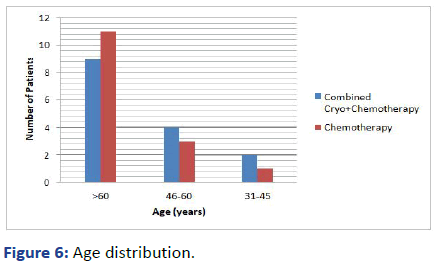
Figure 6: Age distribution.
Gender Distribution
Among the 30 study subjects, 23 (76.6%) were male and 7 (23.3%) were female (Table 2 and Figure 7).
| Gender distribution | Combined cryo+chemotherapy | Chemotherapy |
|---|---|---|
| Males | 11 (73.3%) | 12 (80%) |
| Females | 4 (26.7%) | 3 (20%) |
Table 2: Gender wise distribution in study subjects.
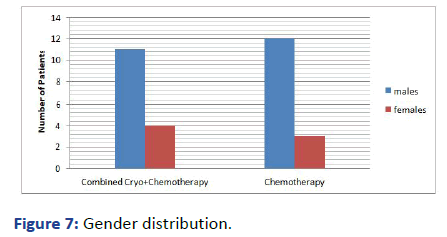
Figure 7: Gender distribution.
Socio-Economic Status
Majority of the study subjects in both the groups belong to lower socioeconomic status: 33.3% (n=5) in combined group and 26.6% (n=4) in the chemotherapy group and upper lower socioeconomic status: 33.33% (n=5) in combined group and 26.6% (n=4) in the chemotherapy group (Table 3 and Figure 8).
| Socio economic status | Combined cryo+chemotherapy | Chemotherapy |
|---|---|---|
| Lower | 5 (33.3%) | 4 (26.6%) |
| Upper lower | 5 (33.3%) | 4 (26.6%) |
| Lower middle | 4 (26.6%) | 2 (13.3%) |
| Upper middle | 1 (6.6%) | 3 (20%) |
| High | 0 | 1 (6.6%) |
| Total | 15 (100%) | 15 (100%) |
Table 3: Socio-economic status.
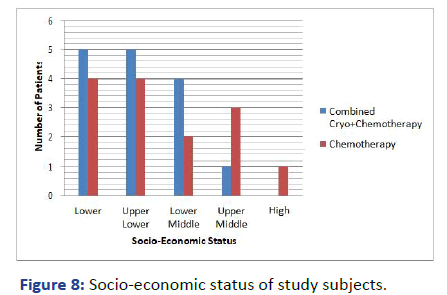
Figure 8: Socio-economic status of study subjects.
Comorbidities
Majority of the study subjects had co morbid condition of COPD in both the groups: n=9, 60% in the combined group and n=5, 33% in the chemotherapy group. Using t-proportion test, it was found that the comorbidity distribution difference compared in both the groups is statistically not significant (p>0.05, 95% CI) (Table 4 and Figure 9).
| Comorbidities | Combined cryo+chemotherapy | Chemotherapy |
|---|---|---|
| COPD | 9 (60%) | 8 (53.3%) |
| Diabetes mellitus | 2 (13.3%) | 3 (20%) |
| Systemic HTN | 3 (20%) | 3 (20%) |
| Post TB sequale | 1 (6.6%) | 2 (13.3%) |
| Others | 0 | 2 (13.3%) |
| Total | 15 (100%) | 15 (100%) |
Table 4: Co morbidities in study subjects.
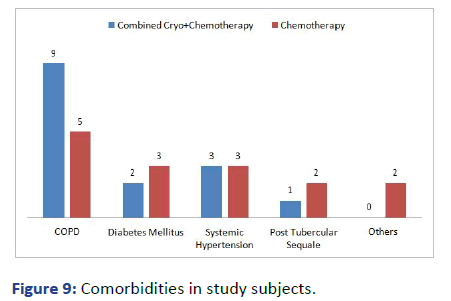
Figure 9: Comorbidities in study subjects.
Smoking Status
Majority of the patients in the study population were smokers (n=23, 76.6%). In the combined group, 66.6% (n=10) were smokers while in the chemotherapy group 84.7% (n=13) were smokers.
Using t-proportion test, it was found that the difference in the smoking distribution compared in both the groups is statistically not significant (p>0.05, 95% CI) (Table 5 and Figure 10).
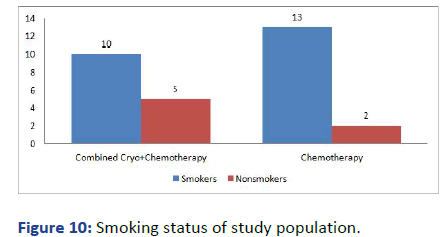
Figure 10: Smoking status of study population.
Smoking index: Mean 530, SD 340.53
| Smoking status | Combined cryo+chemotherapy | Chemotherapy |
|---|---|---|
| Smokers | 10 (66.6%) | 13 (84.7%) |
| Nonsmokers | 5 (33.3%) | 2 (13.3%) |
| Total | 15 (100%) | 15 (100%) |
Table 5: Smoking status.
Location of Tumour
In our study population, the patients in the combined group had tumours majorly in the right main bronchus at 35% (n=6), followed by le t main bronchus at 18% (n=3). The patients in the chemotherapy group had tumour majorly in the trachea at 20% (n=3) followed by right main bronchus at 14% (n=2) (Table 6, Figures 11 and 12).
| Location of tumour | Combined cryo+chemotherapy | Chemotherapy |
|---|---|---|
| Trachea | 2 | 3 |
| RMB | 6 | 2 |
| RULB | 0 | 2 |
| RIMB | 3 | 2 |
| RLLB | 1 | 2 |
| LMB | 3 | 1 |
| LULB | 1 | 2 |
| LLB | 1 | 1 |
| LLLB | 0 | 0 |
Table 6: Location of tumour.
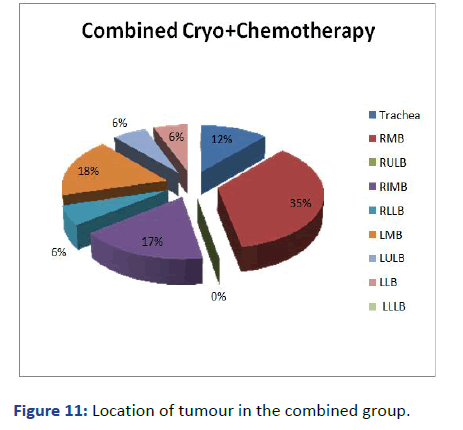
Figure 11: Location of tumour in the combined group.
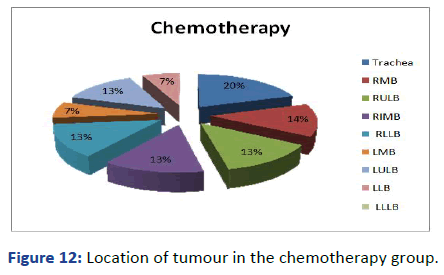
Figure 12: Location of tumour in the chemotherapy group.
Stage at Diagnosis
As shown in Table 7, majority of the patients had stage IV lung cancer at diagnosis at 50% (n=15). In the combined group out of 15, majority of the patients at 53.3% (n=8) had stage IV lung cancer followed by stage IIIA at 20% (n=2) at diagnosis. In the chemotherapy group out of 15, majority of the patients had stage IV lung cancer at 46.6% (n=7) followed by stage IIIB lung cancer at 26.6% (n=4) (Table 7 and Figure 13).
| Stage at diagnosis | Combined cryo+chemotherapy | Chemotherapy |
|---|---|---|
| IIIA | 3 (20%) | 2 (13.3%) |
| IIIB | 2 (13.3%) | 4 (26.6%) |
| IV | 8 (53.3%) | 7 (46.6%) |
| Limited SCLC | 1 (6.6%) | 1 (6.6%) |
| Extensive SCLC | 1 (6.6%) | 1 (6.6%) |
| Total | 15 (100%) | 15 (100%) |
Table 7: Stage at diagnosis.
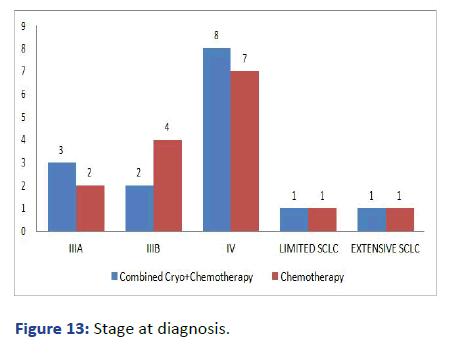
Figure 13: Stage at diagnosis.
Histology of Cancer at Diagnosis
In the study population, in both the groups, 13 out of 15 patients (86.6%, n=13) had nonsmall cell carcinoma and 2 out of 15 patients (13.3%, n=2) had small cell carcinoma (Table 8 and Figure 14).
| Histology | Combined cryo+chemotherapy | Chemotherapy |
|---|---|---|
| Non Small Cell Lung Cancer (NSCLC) | 13 (86.66%) | 13 (86.66%) |
| Small Cell Lung Cancer (SCLC) | 2 (13.3%) | 2 (13.3%) |
| Total | 15 (100%) | 15 (100%) |
Table 8: Histology of tumour at diagnosis.
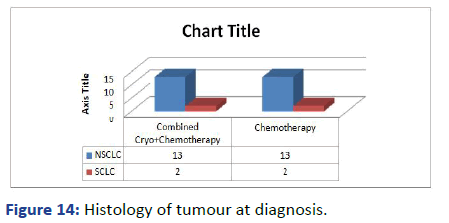
Figure 14: Histology of tumour at diagnosis.
Non-Small Cell Lung Cancer Subtype
As shown in the Table 9, majority of the patients in the study population had squamous cell carcinoma of the lung at 60% (n=30). In the combined group, 8 out of 15 patients had squamous cell carcinoma (53.3%) while in the chemotherapy group 10 out of 15 patients had squamous cell carcinoma histology (66.6%). In the combined group, 6 out of 15 patients had squamous cell carcinoma (40%) while in the chemotherapy group 5 out of 15 patients had squamous cell carcinoma histology (33.3%) (Table 9 and Figure 15).
| NSCLC subtype | Combined cryo+chemotherapy | Chemotherapy |
|---|---|---|
| Squamous cell | 8 (53.3%) | 10 (66.6%) |
| Adenocarcinoma | 6 (40%) | 5 (33.3%) |
| Large cell carcinoma | 1 (6.6%) | 0 |
| Others | 0 | 0 |
| Total | 15 (100%) | 15 (100%) |
Table 9: Non-small cell lung cancer subtype.
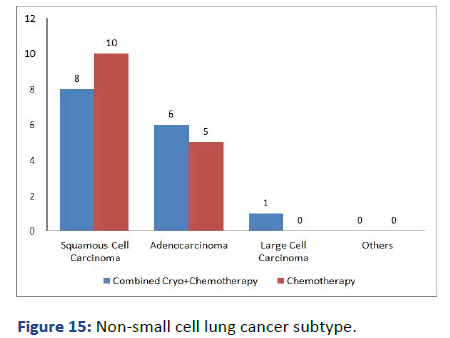
Figure 15: Non-small cell lung cancer subtype.
Number of Cycles of Therapy Received
In the study populat on, majority of pat ents received 3 cycles in the combined cryo+chemotherapy group and 6 cycles in the chemotherapy group. Among cryo+chemotherapy group (Table 10 and Figure 16).
| No of cycles | 3 | 4 | 5 | 6 |
|---|---|---|---|---|
| Combined cryochemothrapy | 6 (40%) | 3 (20%) | 1 (6.6%) | 5 (33.3%) |
| Chemotherapy | 1 (6.6%) | 0 | 1 (6.6%) | 13 (86.6%) |
Table 10: Number of cycles of therapy received.
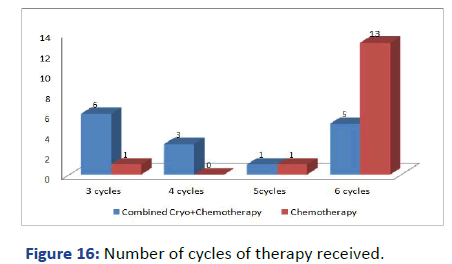
Figure 16: Number of cycles of therapy received.
Radiological Progression
We used EORTC RECIST v1.1 (response evaluation using CT scan in solid tumours) evaluation tool to assess disease progression in the two groups [22]. Baseline CECT was compared with a follow up CECT at 6th month of the study period. The patients who were excluded from the study in the cryochemotherapy group before completion of 6th cycle were followed up till the 6th cycle during their routine chemotherapy sessions and data was recorded (Table 11).
| Number of cycles received | Recist 6th cycle | |
|---|---|---|
| Cryo+chemotherapy | Chemotherapy | |
| 3 cycles | X, X, X, SD, X | X |
| 4 cycles | PR, X, SD, PR | No patients |
| 5 cycles | PR | X |
| 6 cycles | PR, PD, PR, CR, SD | SD, SD, X, X, X, PD, PD, PD, PR ,X, PR, PR, CR |
Note: (CR=Complete Response, PR=Partial Response, SD=Stable Disease, PD=Progressive Disease, X=Expired)
Table 11: Response in RECIST assessed at 6th cycle of therapy.
Response rate=(CR+PR)/n was calculated for each group. Also, non-progressive disease rate (CR+PR+SD) was calculated for each group.
For cryo+chemotherapy group, RR=6/10=60%
For chemotherapy group, RR=4/9=40%
For cryo+chemotherapy group, non-progressive disease
rate=9/10=90%
For chemotherapy group, non-progressive disease
rate=6/9=66.6%
Fisher‘s exact T test was applied for the 2 × 2 contingency
table and the results were obtained as below:
Comparison of RR for cryochemotherpy group vs. chemotherapy group: Fisher’s exact statistic value=0.6563 (p>0.05)
Comparison of NPD rate for cryochemotherapy group vs. chemotherapy group: Fisher’s exact statistic value=0.0177 (p<0.05)
Hence, combined cryochemotherapy was shown to be superior over combined chemotherapy in terms of halting disease progression with a stronger p-value, although the improvement in RR was marginal and statistically insignificant.
EORTC Quality of Life Questionnaire: Lung Cancer LC-13 Module
Dyspnea severity score: In this study, we interviewed the patients at the baseline after getting a diagnosis of lung cancer and obtained a standardized score of dyspnea using EORTC formula to a range of 0 to 100, where 0 denotes no symptoms and 100 denotes maximum severity of symptoms. We interviewed the patient at the end of each cycle in both the groups. The resulting mean values for each group were plotted against the number of cycles received and statistical methods were applied.
Pearson‘s correlation coefficient for combined cryo +chemotherapy group:
R=-0.9269 (p=0.0027)
Pearson‘s correlation coefficient for chemotherapy group:
R=-0.7641 (p=0.045551)
This denotes that combined cryo+chemotherapy has a statistically signi icant (p=0.027, 95% CI) strong correlation with dyspnea as the number of cycles progressed (R=-0.9269) while chemotherapy alone has a statistically signi icant (p=0.04, 95% CI) moderate correlation with dyspnea as the number of cycles progress (-0.7641) (Table 12 and Figure 17).
| Number of cycles | Combined cryo+chemotherapy (Mean score) | Chemotherapy (Mean score) |
|---|---|---|
| Baseline | 66.63 | 73.04 |
| 1st cycle | 45.64 | 70.34 |
| 2nd cycle | 39.26 | 68.86 |
| 3rd cycle | 35.68 | 73.02 |
| 4th cycle | 30.15 | 70.07 |
| 5th cycle | 27.18 | 61.21 |
| 6th cycle | 23.9 | 63.86 |
Table 12: Dyspnea severity score according to LC-13 questionnaire.
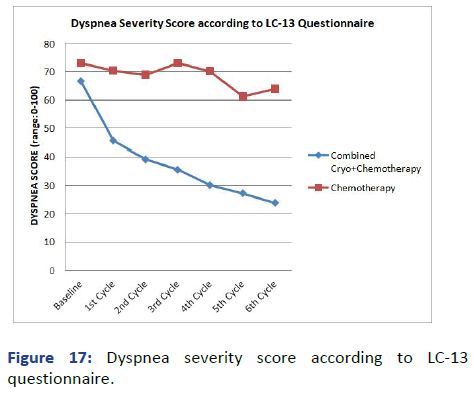
Figure 17: Dyspnea severity score according to LC-13 questionnaire.
Cough Severity Score
Pearson‘s correlation coefficient for combined cryochemotherapy group:
R=0.9598 (p=0.000617)
Pearson‘s correlation coefficient for chemotherapy group:
R=-0.7646 (p=0.0452)
This denotes that combined cryo+chemotherapy has a statistically significant (p=0.000617, 95% CI) strong negative correlation with cough as the number of cycles progresses (R=-0.9598) while chemotherapy alone has a statistically significant (p=0.0452, 95% CI) moderately negative correlation with cough as the number of cycles progress (R=-0.7646) (Table 13 and Figure 18).
| No. of cycles | Combined cryo+chemotherapy | Chemotherapy |
|---|---|---|
| Baseline | 64.4 | 82.19 |
| 1st cycle | 57.1 | 71.07 |
| 2nd cycle | 41.1 | 68.05 |
| 3rd cycle | 38.16 | 66.6 |
| 4th cycle | 40.6 | 68.85 |
| 5th cycle | 29.15 | 69.4 |
| 6th cycle | 18.32 | 63.6 |
Table 13: Mean cough severity score according to LC-13 questionnaire.
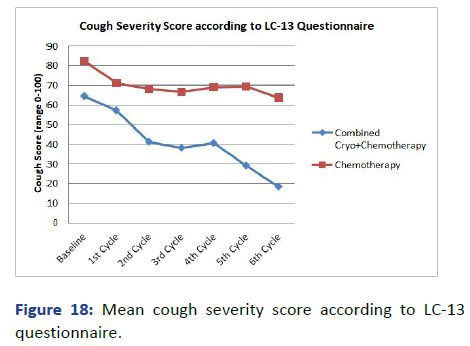
Figure 18: Mean cough severity score according to LC-13 questionnaire.
Hemoptysis Severity Score
Pearson‘s correlation coefficient for combined cryo+ chemotherapy group:
R=-0.8796 (p=0.009156)
Pearson‘s correlation coe icient for chemotherapy group:
R=-0.9129 (p=0.04101)
This denotes that combined cryo+chemotherapy has a statistically signi icant (p=0.009156, 95% CI) strong negative correlation with hemoptysis as the number of cycles progressed (R=-0.5796) while chemotherapy alone has a statistically signi icant (p=0.04101, 95% CI) strong negative correlation with hemoptysis as the number of cycles progressed (R=-0.7646) (Table 14 and Figure 19).
| Number of cycles | Combined cryo+chemotherapy (Mean score) | Chemotherapy (Mean score) |
|---|---|---|
| Baseline | 24.43 | 62.18 |
| 1st cycle | 16.65 | 59.97 |
| 2nd cycle | 7.68 | 57.64 |
| 3rd cycle | 9.08 | 53.29 |
| 4th cycle | 12.5 | 57.73 |
| 5th cycle | 5.5 | 47.4 |
| 6th cycle | 0 | 45.8 |
Table 14: Hemoptysis severity score according to LC-13 questionnaire.
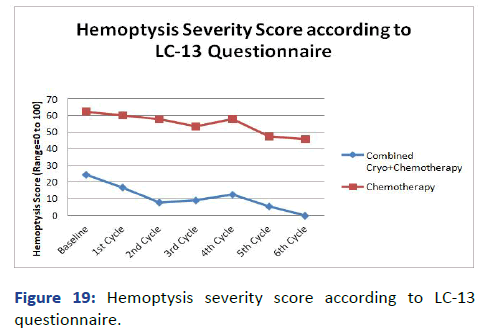
Figure 19: Hemoptysis severity score according to LC-13 questionnaire.
Pain Related Symptom Score
Pearson‘s correlation coefficient for combined cryo +chemotherapy group:
R=-0.7508 (p=0.0521)
Pearson‘s correlation coefficient for chemotherapy group:
R=-0.7234 (p=0.0661)
This denotes that combined cryo+chemotherapy has a statistically insigni icant (p=0.0521, 95% CI) moderately negative correlation with pain as the number of cycles progressed (R=-0.7508) while chemotherapy alone has a statistically insigni icant (p=0.0661, 95% CI) moderately negative correlation with pain as the number of cycles progress (R=-0.7324) (Table 15 and Figure 20).
| Number of cycles | Combined cryo+chemotherapy (Mean score) | Chemotherapy (Mean score) |
|---|---|---|
| Baseline | 48.32 | 78.21 |
| 1st cycle | 41.62 | 75.8 |
| 2nd cycle | 48.67 | 71.17 |
| 3rd cycle | 37.85 | 70.24 |
| 4th cycle | 41.62 | 70.42 |
| 5th cycle | 41.63 | 72.69 |
| 6th cycle | 29.98 | 70.93 |
Table 15: Pain related symptom score according to LC-13 questionnaire.
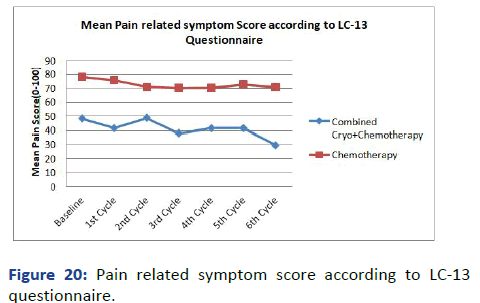
Figure 20: Pain related symptom score according to LC-13 questionnaire.
Chemotherpy Related Toxicity Symptom Score
Pearson‘s correlation coefficient for combined cryo +chemotherapy group:
R=0.201743 (p=0.541568)
Pearson‘s correlation coefficient for chemotherapy group:
R=0.5491 (p=0.201743)
This denotes that combined cryo+chemotherapy has a statistically insignificant (p=0.541568, 95% CI) poor strength of correlation with chemotherpy related toxicity as the number of cycles progresses (R=0.201743) while chemotherapy alone has a statistically insignificant (p=0.201743, 95% CI) poor correlation with chemotherpy related toxicity as the number of cycles progress (R=-0.7324) (Table 16 and Figure 21).
| Number of cycles | Combined cryo+chemotherapy (Mean score) | Chemotherapy (Mean score) |
|---|---|---|
| Baseline | 19.27 | 21.64 |
| 1st cycle | 44.71 | 45.11 |
| 2nd cycle | 32.6 | 53.3 |
| 3rd cycle | 35.39 | 50.95 |
| 4th cycle | 24.28 | 49.41 |
| 5th cycle | 13.88 | 44.59 |
| 6th cycle | 30 | 48.55 |
Table 16: Chemotherapy related toxicity score according to LC-13 questionnaire.
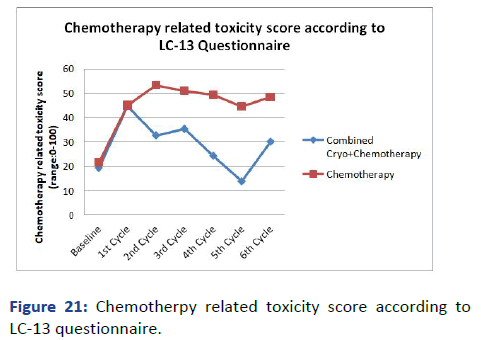
Figure 21: Chemotherpy related toxicity score according to LC-13 questionnaire.
As denoted in Figure 21 there is a steep increase in the reporting of chemotherapy related toxicity after administration of first cycle of chemotherapy in comparison with the baseline score (19.27 for combined cryo +chemotherapy group and 12.64 for chemotherapy group at baseline followed by 44.7 in the combined group and 45.11 in the chemotherapy group. Thereafter the reporting of toxicity symptoms remains steady as the number of cycles progress.
Quality of Life Scoring Using the EORTC QL Questionnaire Module C-30
In this study we used the EORTC C-30 questionnaire module. In this module, there are 30 different questions grouped under 12 distinct scoring heads. We interviewed the patients in the study at baseline after final diagnosis of lung cancer and thereafter, after completion of each cycle of therapy.
Global functioning: We assessed five functional sales.
• Physical functioning
• Role functioning
• Emotional functioning
• Social functioning
• Cognitive functioning
We assessed five symptom scales.
• Nausea and Vomiting
• Insomnia
• Appetite Loss
• Constipation
• Diarrhea
Using the formula given in the EORTC C-30 scoring manual, the mean scores for each group were plotted against the number of cycles received. Pearson‘s correlation coefficient was applied and R value calculated. P value was also calculated at 95% confidence intervals.
Global Functioning
This function scale consists of two questions and the interview was conducted at the baseline and at every cycle of therapy thereafter. The score was standardized to a range of 0 to 100, where 0 denotes worst levels of function and 100 denotes highest levels of function as reported by the patient. The mean scores were calculated and plotted against the number of cycles received. Pearson‘s Correlation Coefficient and P value were calculated.
According to the data in Table 17, combined cryo +chemotherapy group: Pearson‘s correlation coefficient (R)=0.9705 (p=0.000283).
Chemotherapy group: Pearson‘s correlation coefficient (R)=0.2469 (p=0.593507).
In conclusion, there was a statistically significant (p=0.000283, 95% CI) strong positive correlation (R=0.9705) between the global function score as the number of cycles progressed in the combined cryo+chemotherapy group.
There was a statistically insignificant (p=0.593507, 95% CI) weakly positive correlation (R=0.2469) between the global function score as the number of cycles progressed in the chemotherapy group (Table 17 and Figure 22).
| Number of cycles | Combined cryo+chemotherapy (Mean score) | Chemotherapy (Mean score) |
|---|---|---|
| Baseline | 36.31 | 38.08 |
| 1st cycle | 43.56 | 41.09 |
| 2nd cycle | 54.45 | 44.96 |
| 3rd cycle | 49.61 | 45.18 |
| 4th cycle | 63.14 | 43.02 |
| 5th cycle | 69.98 | 40.6 |
| 6th cycle | 74.03 | 41.74 |
Table 17: Global functioning scale.
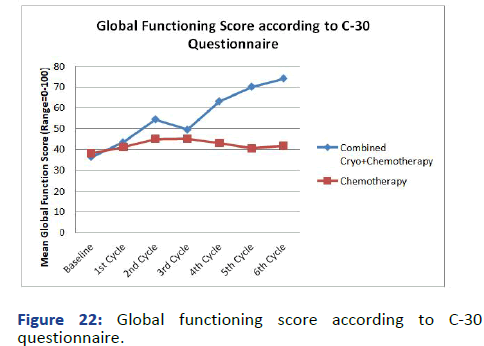
Figure 22: Global functioning score according to C-30 questionnaire.
Physical Functioning
According to the data in Table 18, combined cryo +chemotherapy group: Pearson‘s correlation coefficient (R)=0.982 (p=0.00008).
Chemotherapy group: Pearson‘s correlation coefficient (R)=0.6704 (p=0.0993).
In conclusion, there was a statistically significant (p=0.00008, 95% CI) strong positive correlation (R=0.982) between the PF Score as the number of cycles progressed in the combined cryo+chemotherapy group.
There was a statistically insignificant (p=0.0993, 95% CI) moderately positive correlation (R=0.6704) between the PF as the number of cycles progressed in the chemotherapy group (Table 18 and Figure 23).
| Number of cycles | Combined cryochemotherapy (Mean score) | Chemotherapy (Mean score) |
|---|---|---|
| Baseline | 41.67 | 39.63 |
| 1st cycle | 48.04 | 35 |
| 2nd cycle | 53.65 | 41.8 |
| 3rd cycle | 54.28 | 41.46 |
| 4th cycle | 65.15 | 48.32 |
| 5th cycle | 74.8 | 39.51 |
| 6th cycle | 76.75 | 48.8 |
Table 18: Physical functioning scale.
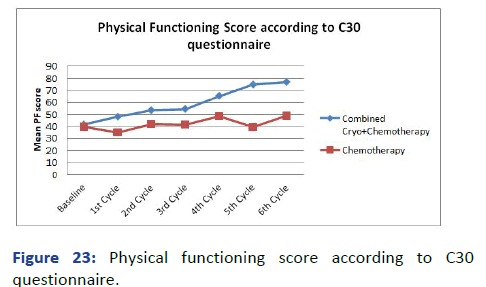
Figure 23: Physical functioning score according to C30 questionnaire.
Role Functioning
According to the data in Table 19, combined cryo +chemotherapy group: Pearson‘s correlation coefficient (R)=0.88 (0.00897).
Chemotherapy group: Pearson‘s correlation coefficient (R)=0.6284 (p=0.1306).
In conclusion, there was a statistically significant (p=0.00897, 95% CI) strong positive correlation (R=0.88) between the role functioning score as the number of cycles progressed in the combined cryo+chemotherapy group.
There was a statistically insignificant (p=0.1306, 95% CI) moderately positive correlation (R=0.6284) between the role functioning score as the number of cycles progressed in the chemotherapy group (Table 19 and Figure 24).
| Number of cycles | Combined cryo+chemotherapy | Chemotherapy |
|---|---|---|
| Baseline | 50.11 | 39.68 |
| 1st cycle | 40.87 | 38.88 |
| 2nd cycle | 49.35 | 44.46 |
| 3rd cycle | 49.97 | 36.64 |
| 4th cycle | 60.61 | 44.04 |
| 5th cycle | 87.53 | 44.02 |
| 6th cycle | 91.75 | 45.87 |
Table 19: Role functioning scale.
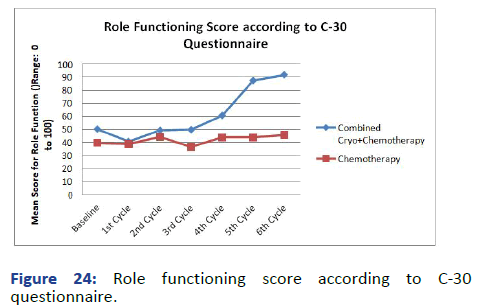
Figure 24: Role functioning score according to C-30 questionnaire.
Emotional Functioning
According to the data in Table 20, combined cryo +chemotherapy group: Pearson‘s correlation coefficient (R)=0.6965 (p=0.082096).
Chemotherapy group: Pearson‘s correlation coefficient (R)=0.3487 (p=0.443352).
In conclusion, there was a statistically insignificant (p=0.0082096, 95% CI) moderately positive correlation (R=0.6965) between the emotional functioning score as the number of cycles progressed in the combined cryo+chemotherapy group.
There was a statistically insignificant (p=0.443352, 95% CI) low positive correlation (R=0.3487) between the emotional functioning score as the number of cycles progressed in the chemotherapy group (Table 20 and Figure 25).
| Number of cycles | Combined cryo+chemotherapy | Chemotherapy |
|---|---|---|
| Baseline | 52.88 | 40.32 |
| 1st cycle | 59.26 | 46.17 |
| 2nd cycle | 65.94 | 41.7 |
| 3rd cycle | 59.93 | 43.3 |
| 4th cycle | 66.44 | 39.98 |
| 5th cycle | 61.08 | 40.07 |
| 6th cycle | 66.66 | 41.6 |
Table 20: Emotional functioning scale.
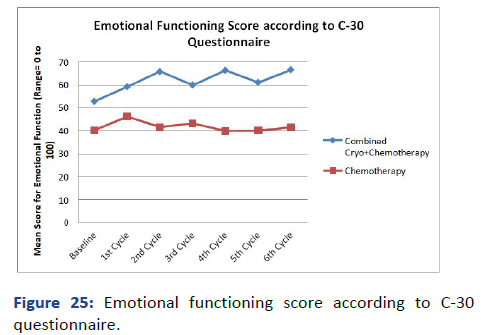
Figure 25: Emotional functioning score according to C-30 questionnaire.
Cognitive Functioning
According to the data in Table 21, combined cryo +chemotherapy group: Pearson‘s correlation coefficient (R)=-0.5105 (p=0.242254).
Chemotherapy group: Pearson‘s correlation coefficient (R)=-0.5001 (p=0.25317).
In conclusion, there was a statistically insignificant (p=0.242254, 95% CI) moderately negative correlation (R=-0.5105) between the cognitive functioning score as the number of cycles progressed in the combined cryo+chemotherapy group.
There was a statistically insignificant (p=0.25317, 95% CI) low positive correlation (R=-0.5001) between the cognitive functioning score as the number of cycles progressed in the chemotherapy group (Table 21 and Figure 26).
| Number of cycles | Combined cryo+chemotherapy | Chemotherapy |
|---|---|---|
| Baseline | 67.85 | 73 |
| 1st cycle | 64.38 | 66.08 |
| 2nd cycle | 64.42 | 66.08 |
| 3rd cycle | 68.97 | 68.02 |
| 4th cycle | 74.2 | 60.97 |
| 5th cycle | 61.1 | 63.35 |
| 6th cycle | 50 | 68.23 |
Table 21: Cognitive functioning scale.
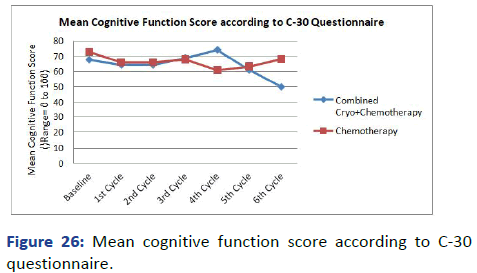
Figure 26: Mean cognitive function score according to C-30 questionnaire.
Social Functioning
According to the data in Table 22, combined cryo +chemotherapy group: Pearson‘s correlation coefficient (R)=0.8252 (p=0.02227).
Chemotherapy group: Pearson‘s correlation coefficient (R)=0.5937 (p=0.1599).
In conclusion, there was a statistically significant (p=0.02227, 95% CI) strongly positive correlation (R=0.8252) between the social functioning score as the number of cycles progressed in the combined cryo+chemotherapy group.
There was a statistically insignificant (p=0.1599, 95% CI) moderately positive correlation (R=0.5937) between the social functioning score as the number of cycles progressed in the chemotherapy group (Table 22 and Figure 27).
| Number of cycles | Combined cryo+chemotherapy | Chemotherapy |
|---|---|---|
| Baseline | 38.86 | 42.87 |
| 1st cycle | 33.62 | 38.02 |
| 2nd cycle | 47.75 | 41.46 |
| 3rd cycle | 47.84 | 43.62 |
| 4th cycle | 41.7 | 43.77 |
| 5th cycle | 53.6 | 41.74 |
| 6th cycle | 56.7 | 45.97 |
Table 22: Social functioning scale.
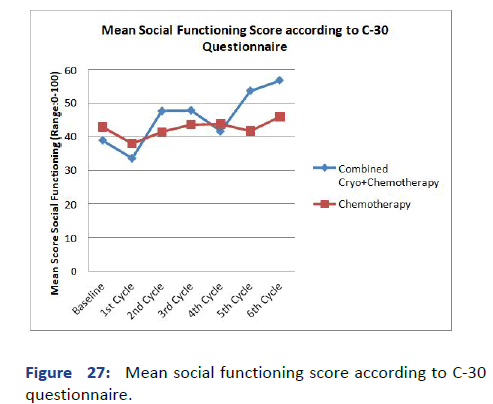
Figure 27: Mean social functioning score according to C-30 questionnaire.
Symptom Scale Part of C-30 Questionnaire
We used SIX symptom scales from the QLQ C-30 questionnaire and used the formula to standardize the score into a score ranging from 0-100. Here, zero denotes least amount of symptoms while 100 denotes highest severity of symptoms as reported by the patient.
Nausea and Vomiting
We interviewed the patients at baseline and subsequently at every cycle of therapy. Mean scores were plotted against number of cycles in both groups and Pearson‘s Correlation Coefficient and P values were calculated.
As denoted in Table 23, combined cryo+chemotherapy group: Pearson‘s correlation coefficient (R)=-0.4126 (p=0.35838).
Chemotherapy group: Pearson‘s correlation coefficien (R)=0.3278 (p=0.47291).
In conclusion, there was a statistically insignificant (p=0.35838, 95% CI) moderately negative correlation (R=-0.4126) between the nausea and vomiting score as the number of cycles progressed in the combined cryo +chemotherapy group.
There was a statistically insignificant (p=0.47291, 95% CI) moderately negative correlation (R=0.3278) between the nausea and vomiting score as the number of cycles progressed in the chemotherapy group (Table 23 and Figure 28).
| Number of cycles | Combined cryo+chemotherapy | Chemotherapy |
|---|---|---|
| Baseline | 17.84 | 11.1 |
| 1st cycle | 65.06 | 53.58 |
| 2nd cycle | 33.3 | 35.8 |
| 3rd cycle | 16.23 | 27.9 |
| 4th cycle | 16.08 | 17.09 |
| 5th cycle | 19.76 | 21.7 |
| 6th cycle | 22.2 | 18.24 |
Table 23: Mean score of nausea and vomiting.
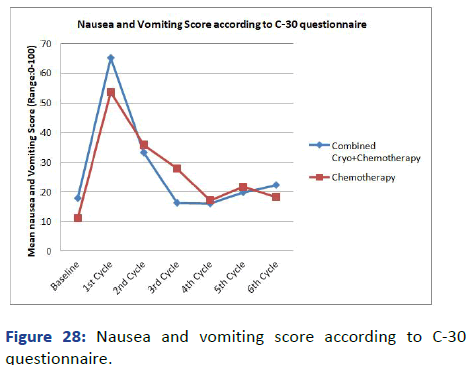
Figure 28: Nausea and vomiting score according to C-30 questionnaire.
It can be observed in Figure 28 that there was a sharp increase in the nausea and vomiting mean scores right a ter administration of first cycle of chemotherapy and remained higher than the beaseline for subsequent cycles.
Insomnia
As denoted in Table 24, combined cryo+chemotherapy group: Pearson‘s correlation coefficient (R)=-0.8907 (p=0.007259).
Chemotherapy group: Pearson‘s correlation coefficient (R)=-0.7679 (p=0.043791).
In conclusion, there was a statistically significant (p=0.007259, 95% CI) strongly negative correlation (R=-0.8907) between the insomnia score as the number of cycles progressed in the combined cryo+chemotherapy group.
There was a statistically signi icant (p=0.043791, 95% CI) moderately negative correlation (R=-0.7679) between the insomnia score as the number of cycles progressed in the chemotherapy group (Table 24 and Figure 29).
| Number of cycles | Combined cryo+chemotherapy | Chemotherapy |
|---|---|---|
| Baseline | 64.42 | 64.4 |
| 1st cycle | 68.86 | 68.84 |
| 2nd cycle | 53.28 | 55.51 |
| 3rd cycle | 41.08 | 64.4 |
| 4th cycle | 51.67 | 52.35 |
| 5th cycle | 43.03 | 51.24 |
| 6th cycle | 28.3 | 53.81 |
Table 24: Mean score of insomnia.
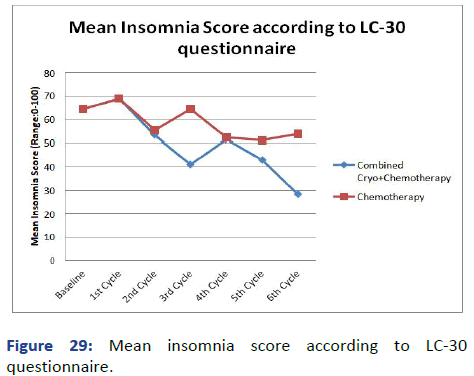
Figure 29: Mean insomnia score according to LC-30 questionnaire.
Appetite Loss
As denoted in Table 25, combined cryo+chemotherapy group: Pearson‘s correlation coefficient (R)=-0.85 (p=0.015412).
Chemotherapy group: Pearson‘s correlation coefficient (R)=-0.89 (p=0.007259).
In conclusion, there was a statistically significant (p=0.015412, 95% CI) strongly negative correlation (R=-0.85) between the appetite loss score as the number of cycles progressed in the combined cryo+chemotherapy group.
There was a statistically signi icant (p=0.007259, 95% CI) strongly negative correlation (R=-0.89) between the appetite loss score as the number of cycles progressed in the chemotherapy group (Table 25 and Figure 30).
| Number of cycles | Combined cryo+chemotherapy | Chemotherapy |
|---|---|---|
| Baseline | 71.08 | 62.18 |
| 1st cycle | 73.3 | 59.96 |
| 2nd cycle | 54.5 | 57.74 |
| 3rd cycle | 55.5 | 52.33 |
| 4th cycle | 59.2 | 52.33 |
| 5th cycle | 55.5 | 45.3 |
| 6th cycle | 44.41 | 51.23 |
Table 25: Mean score of appetite loss.
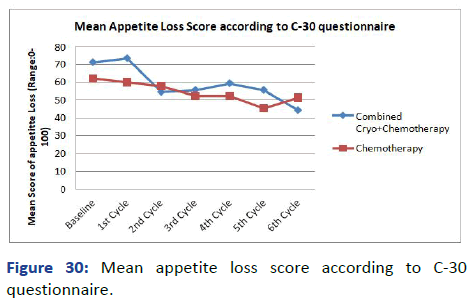
Figure 30: Mean appetite loss score according to C-30 questionnaire.
Constipation
As denoted in Table 26, combined cryo+chemotherapy group: Pearson‘s correlation coefficient (R)=-0.699 (p=0.080536).
Chemotherapy group: Pearson‘s correlation coefficient (R)=-0.6438 (0.119283).
In conclusion, there was a statistically insigni icant (p=0.080536, 95% CI) moderately negative correlation (R=-0.699) between the constipation score as the number of cycles progressed in the combined cryo+chemotherapy group.
There was a statistically insigni icant (p=0.119283, 95% CI) moderately negative correlation (R=-0.6438) between the constipation score as the number of cycles progressed in the chemotherapy group (Table 26 and Figure 31).
| Number of cycles | Combined cryo+chemotherapy | Chemotherapy |
|---|---|---|
| Baseline | 22.2 | 19.98 |
| 1st cycle | 15.5 | 15.54 |
| 2nd cycle | 28.8 | 11.1 |
| 3rd cycle | 13.3 | 16.6 |
| 4th cycle | 18.5 | 14.27 |
| 5th cycle | 11.1 | 11.89 |
| 6th cycle | 5.5 | 12.8 |
Table 26: Mean score of constipation.
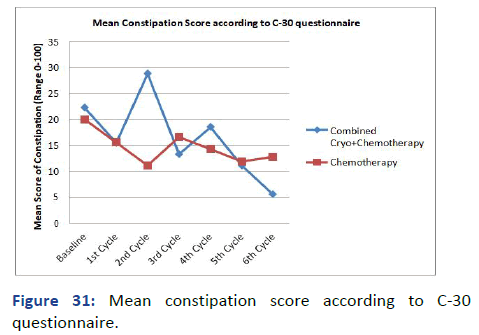
Figure 31: Mean constipation score according to C-30 questionnaire.
Diarrhea
As denoted in Table 27, combined cryo+chemotherapy group: Pearson‘s correlation coefficient (R)=0.7236 (p=0.066034).
Chemotherapy group: Pearson‘s correlation coefficient (R)=0.8863 (p=0.007868).
In conclusion, there was a statistically insigni icant (p=0.066034, 95% CI) moderately positive correlation (R=0.7236) between the diarrhea score as the number of cycles progressed in the combined cryo+chemotherapy group.
There was a statistically signi icant (p=0.007868, 95% CI) strongly positive correlation (R=0.8863) between the diarrhea score as the number of cycles progressed in the chemotherapy group (Table 27 and Figure 32).
| Number of cycles | Combined cryo+chemotherapy | Chemotherapy |
|---|---|---|
| Baseline | 4.4 | 6.6 |
| 1st cycle | 8.8 | 11.1 |
| 2nd cycle | 8.8 | 11.1 |
| 3rd cycle | 11.1 | 15.5 |
| 4th cycle | 7.4 | 15.36 |
| 5th cycle | 11.1 | 16.65 |
| 6th cycle | 11.1 | 15.36 |
Table 27: Mean scores for diarrhea.
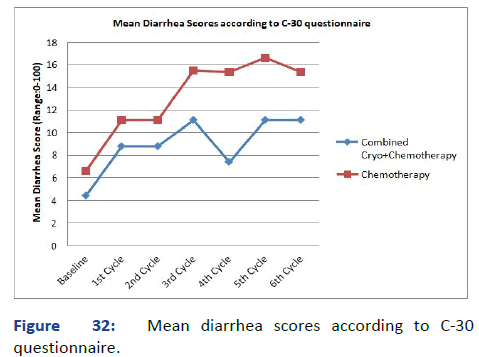
Figure 32: Mean diarrhea scores according to C-30 questionnaire.
This was an observational, prospective, case-control study conducted at national institute of tuberculosis and respiratory diseases, New Delhi, from November 2017 to February 2019 and aimed to study the effect of combined cryotherapy and chemotherapy versus chemotherapy alone in the patients of centrally located advanced lung cancer. The total number of patients enrolled during the 15 month study period was 30 after obtaining a valid consent.
Age
In our study, the mean age of the population was 60.5 ± 9.62 years. This is similar to the mean age in the studies conducted by Sanderson, et al., Marasso, et al., Mathur, et al., Maiwand, et al., Maiwand, et al., Asimakopoulos, et al., Zognas, et al., Beeson, et al. were 63 years, 62 years, 62 ± 13.41 years, 68 years, 68.8 years, 67.9, 68.3 years respectively [25-29].
In the combined cryo+chemotherapy group, 9 out of 15 patients (60%) belonged to the age group >60 years while in the chemotherapy group, 11 out of 15 (73.3%) patients belonged to the age group >60 years. According to the study in Indian subcontinent by Noronha, et al., the mean age at the diagnosis of lung cancer is 52.16 years [30]. The mean age in the both cryo+chemotherapy and chemotherapy arms were comparable as the difference between them was statistically insignificant. (p=0.52, t test used).
Gender
Out of 30 study subjects, 23 (76.6%) were male and 7 (23.3%) were female with male: Female ratio of 3.28:1. 73.3% patients in the cryochemotherapy group were males and 80% patients in the chemotherapy group were males. The gender difference was compared using t-proportion test and it was insignificant (p>0.05). Studies conducted show similar gender distribution with a clear male preponderance. Previous studies like Sanderson, et al., Maiwand, et al., Maiwand, et al., Zoganas, et al. showed male:female ratios 4.6:1, 2.57:1, 1.8:1, 1.34:1 respectively. This concludes that males are 1.2-3 times more prone to show a centrally located, locally advanced and metastatic lung cancer. This may further be explained by high incidence of smoking in male populations in India in comparison with females leading to higher incidence of lung cancer. Males are also exposed to higher level of carcinogenic fumes and noxious particles at their workplace which predisposes them to lung cancer.
Socio Economic Status
In our study, 5 out of 15 (33.3%) in combined cryo +chemotherapy group and 4 out of 15 (26.6%) in the chemotherapy group belonged to lower socioeconomic class. 5 out of 15 (33.3%) in combined cryochemotherapy group and 4 out of 15 (26.6%) in the chemotherapy group belonged to the upper lower socioeconomic status. Kuppuswamy scale was used to calculate socioeconomic status. Similar epidemiological study by Yang Mao, et al. demonstrated the higher incidence of advanced lung cancer in lower socioeconomic status [31].
Smoking Status
Our study involved 23 out of 30 (76.6%) of the patients being smokers with mean smoking index 530 ± 340.53. 10 out of 15 (66.6%) patients were smokers in the cryochemotherapy group and 13 out of 15 (84.7%) were smokers in the chemotherapy group. The smoking index between the two study groups were comparable as the difference was not statistically significant (p>0.05, t test used).
Comorbidities
The most common comorbidity in our study population was COPD with 9 out of 15 patients (66.6%) in the combined cryo +chemotherapy group having COPD and 5 out of 15 (33.3%) patients in the chemotherapy group (p=0.154). The difference was statistically insignificant.
In the study conducted by Koch, et al. smoking was found to be an independent poor prognostic factor in progression of advanced lung cancer [32]. Gore, et al. showed that COPD significantly affects the quality of life negatively in advanced lung cancer patients as well as emotional function [33].
Stage at Diagnosis
50% of our study population were in stage IV lung cancer at diagnosis, followed by 20% in stage IIIB and 16.6% in stage IIIA. 2 out of 30 patients had small cell carcinoma (6.6%) of which one in limited stage at diagnosis and one in extensive stage. Among stage IV cancer patients, 8 out of 15 (53.4%) patients belonged to the cryochemotherapy group, while 7 out 15 (46.6%) patients belonged to the chemotherapy group. Similarly, in studies conducted by Beeson, et al., Chung, et al. reported 48.4% and 57.2% patients had stage IV lung cancer at diagnosis respectively [34].
Location of Tumour
In the combined cryochemotherapy group 35% (n=6) patients had the tumour in the right main bronchus, followed by left main bronchus in 18% (n=3). In the chemotherapy group, trachea was the most commonly involved site in 18% of patients (n=3). Auerbach, et al., had demonstrated the involvement of main bronchi in cigar and pipe smokers in comparison with more peripheral tumours in cigarette smokers [35]. It was postulated that finer carcinogens in filtered cigarettes cause tumorigenesis peripherally. Our study population involved majority of beedi and hukkah smokers, hence more prone to proximally situated central lung cancer.
Similarly, in a study conducted by Mathur, et al., 27% had tumour in right main bronchus. A recent study by Dalar, et al. showed that majority (37%) of patients had the primary tumour in right main bronchus [36]. Pant, et al. recently demonstrated that right sided main bronchus tumours are more common in smokers due to straighter and roomier right main bronchus majority of the smoke volume goes, leading to more exposure to carcinogenic material [37].
Histology of Tumour
86.6% of our study population patients had non small cell lung cancer (n=26). Among them, majority 76.6% of the patients had squamous cell carcinoma (n=18), 36.6% patients had adenocarcinoma (n=11). In studies conducted by Maiwand, et al., Maiwand, et al., Zoganas, et al., Beeson, et al. majority of the patients similarly had squamous cell carcinoma in 80%, 68%, 65.2%, 68.3% of patients, respectively. Majority of our study population smokers were beedi smokers. Similarly, an Indian study conducted by Prasad, et al. deduced that in beedi smokers, out 284 patients, 133 (46.8%) had squamous cell carcinoma [38].
Radiological Response
In our study, we used the European Organization for Research and Treatment of Cancer (EORTC) RECIST 1.1 criteria to measure tumour response at the end of 3 or more cycles of therapy in both the groups and compared the results using a paired t-test [39,40]. The response to treatment was recorded as Complete Response (CR), Partial Response (PR), Stable Disease (SD), Progressive Disease (PD).
We also recorded the sum of diameters for target lesions at baseline and at end of 6th cycle of therapy. 5 out of 15 patients (33.3%) in the combined cryo+chemotherapy group received 6 cycles of therapy. 5 out of 15 patients expired before reaching the 6th cycle of combined cryo +chemotherapy and 5 out of 15 patents were excluded from the intervention because of total resolution of the intraluminal mass during subsequent bronchoscopy. However, these patients were followed up till the 6th cycle of their chemotherapy and the response was recorded in terms of sum of diameters and response ratio.
In our study, we concluded that 6 out of 10 patients in the combined cryo+chemotherapy group had either a complete or partial response, with a response rate=60%. Response could not be assessed in 5 out of 15 patients who died before reaching the 6th cycle. In the chemotherapy group, 4 out of 9 patients had either complete or partial response with a response rate=44.4%. Response could not be assessed in 5 out of 15 patients who died before reaching the 6th cycle. Fisher‘s exact t-test was applied and it concluded that the difference is not statistically significant between the two groups (p=0.6563, 95% CI).
Non progressive disease rate was calculated for both combined cryo+chemotherapy and chemotherapy groups at the end of 6th cycle of respective therapy. 9 out of 10 patients (90%) had non progressive disease in the combined cryo +chemotherapy group while 6 out of 9 patients (66.6%). Fischer‘s exact t-test was applied and it was concluded that the difference between the non-progressive disease rate was statistically significant between the two groups (p=0.0177, 95% CI). Hence it can be derived that the combined cryo +chemotherapy was superior to chemotherapy alone with respect to tumour response in terms higher proportion of patients with non-progressive disease.
The mean sum of diameters for target lesions at baseline for the combined cryo+chemotherapy group and chemotherapy group were 76.23 mm and 62.73 mm respectively (p<0.0001). The mean sum of diameters at the end of 6th cycle of chemotherapy for target lesions in the combined cryo +chemotherapy group and chemotherapy group were 38.4 mm (n=10) and 34.46 mm (n=13) respectively (p<0.001).
Using paired t-test it was concluded that there was statistically strong significant difference between the sum of diameters at baseline versus the sum of diameters after 6th cycle of therapy in cryo+chemotherapy group (p=0.00019, 95% CI). Similarly, there was a statistically significant difference between the sum of diameters in the chemotherapy group at baseline versus at 6th cycle of therapy (p=0.01439, 95% CI).
Liu, et al., performed percutaneous MRI guided cryotherapy in locally advanced and metastatic lung cancer in 21 patients and they were followed up for 6-12 months [41]. 17 out of 21 patients had a response (CR in 7 patients, PR in 10 patients) with a response rate of 80% similar to our study.
Niu LZ, et al. reported the results of a total of 840 patients with non-small cell lung cancer who underwent percutaneous cryoablation in whom Complete Remission (CR) was observed in 86 patients (14.4%), Partial Remission (PR) in 588 patients (70.0%) with a response rate of 80% similar to our study. However, this was a five year follow up study and the cryotherapy was done percutaneously.
Zhou H, et al. observed therapeutic effects of cryotherapy combined iodine-125 seeds implantation in 140 patients with advanced lung cancer and the results after 6 postoperative months the patients had CR of 16.8%, PR of 70.1%, Stable Disease (SD) of 7.4% and Progressive Disease (PD) of 5.7%. The response rate was 86.8% in the cryotherapy group which is similar to our study.
In a study conducted by Hetzel, et al. evaluated the response rate of endobronchial tumours after cryotherapy, the complete response rate was 61% (37/60), the partial response rate was 22% (13/60) and the total response rate was 83% which was similar to the finding of our study [42]. There was however no control group and all patients received combined cryochemothaerapy.
Homasson, et al. performed cryotherapy in 27 patients with endobronchial inoperable lung cancer, the procedure was repeated 4-6 days layer and the response rate was evaluated. The results showed that the response rate of malignant tumours was 61.9%.
Noppen, et al. performed cryotherapy in 12 patients of centrally located lung cancer [43]. The process was repeated 1-2 weeks later and the success rate was evaluated. Results showed the success rate to be 80%. Similar results were correlated with study conducted by Luo, et al. reported the results of the 139 patients with unresectable centrally located non-small cell lung cancer treated with the combination of target artery chemotherapy, cryotherapy and radiochemotherapy [44]. During the follow-up of 3 years, the results showed complete response in 44 cases, partial response in 87 cases which were all treated with cryochemotherapy or cryo-radiotherapy, with response rate of 94%.
Cryotherapy leads to tumour shrinkage by three novel mechanisms. First, it induces formation of ice crystals in the tumour cells, which leads to distortion of cellular architecture and triggers apoptosis. Second, it leads to increased sensitivity to chemotherapy by increasing angiogenesis surrounding the tumour tissue. As demonstrated by Forest, et al. This leads to better reach of chemotherapy drugs into the tumour. Third, a new effect of cryotherapy has been discovered by Abdo, et al., called-abscopal effect which postulates that the disrupted tumour fragments enter the bloodstream and lymphatics, to induce T-cell immunity against the tumour cells, practically acting as a potentiator for cancer immunotherapy.
Quality of Life (QOL)
In our study, we recorded the Quality of Life (QOL) using EORTC questionnaires-Lung Cancer specific LC-13 module (13 questions) and C-30 module for all cancers (30 questions).
Average score for Global Functioning (GF) showed a strong positive correlation with the number of cycles of combined cryo+chemotherapy (Pearson‘s correlation coefficient R=0.9705, p=0.000283) while that for chemotherapy weak positive correlation with the number of cycles of therapy (R=0.2469, p=0.5935). This denotes that the combined therapy is highly beneficial over chemotherapy alone in terms of improvement of global function.
In our study, the Physical Function (PF) average score showed a significant, strong positive correlation with the number of cycles of cryo+chemotherapy (R=0.982, p=00008) and an insignificant, weak positive correlation for chemotherapy (0.6704, p=0.0993) denoting superiority of combined cryo +chemotherapy in improvement of overall global and physical functioning of the patient in terms of QOL.
Similar studies have used Karnofsky Performance Score (KPS), WHO Performance Status (PS) to assess the overall functioning levels of the patient.
Zoganas, et al. conducted a QOL survey measuring the Karnofsky index and PS improvement in patients with advanced lung cancer with endobronchial obstruction receiving combined cryotherapy with chemotherapy, radiation versus palliative chemoradiation alone. Improvement in PS at the end of 2 years in surviving patients was 80% and 65% respectively.
Yuanying conducted a multi-group study comparing the QOL improvement in chemotherapy, cryo-chemotherapy, cryoimuunotherapy and chemo-immunotherapy in advanced lung cancers patients. It was demonstrated that the KPS was increased by at least 20% within 1 week in 70% of the patients who received cryotherapy in their intervention, while KPS improvement in non-cryotherapy groups was about 10% in 20% of patients.
Asimakopoulos, et al. demonstrated the efficacy of increasing the number of cryotherapy cycles to obtain a higher KPS, relief in dyspnea and thus overall QOL. At least 10% increase was reported in KPS who received two sessions of croytherapy over a single session. This is similar to our findings of significant improvement of GF and PF as the number of cryotherapy cycles increase. Similarly, Zhikai, et al. conducted a study in 47 patients with centrally located lung cancer and mean KPS after two years in surviving patients improved from 50% to 75% with average of 3 cycles of percutaneous cryotherapy.
Walsh, et al. reported significant improvement in the overall functional level of the patients undergoing cryotherapy in 23 out of 33 patients (70%) after an average of 2 cycles per patient [45]. Similar to our study, Maiwand, et al. in 521 patients undergoing QOL studies showed that the mean KPS improved from 60 ± 7 to 75 ± 8 and the mean WHO score from 3.04 ± 0.7 to 2.20 ± 0.56 after an average of 2.4 cycles of cryotherapy per patient. We have done at least 3 cycles of cryotherapy and/or chemotherapy in our study population. A recent study by Chung et al, in 67 centrally located advanced lung cancer patients, addition of cryotherapy led to significant improvement in the PS of 49 patients (n=67, odds ratio 3.7, p=0.03) over 2 years.
In our study, the dyspnea score using the LC-13 questionnaire showed significant strongly negative correlation in the dyspnea score as the number of cycles progressed in the combined cryochemotherapy group (R=-0.9269, p=0.0027) and significant moderately negative negative correlation for chemotherapy group (R=-0.7641, p=0.045551) indicating superiority of addition of cryotherapy in reducing dyspnea severity in comparison with chemotherapy alone due to recanalisation of the obstructed airways.
Zoganas, et al. conducted a study in 163 patients in whom 81 patients received only cryotherapy and 82 patients received combined cryo+chemotherapy or cryo+radiotherapy or cryo +brachytherapy. Combined cryotherapy with other palliative measures had significant improvement in dyspnea (71.34%) versus only cryotherapy (54.6%). This is due to the abscopal effect of cryotherapy leading to sensitization of the tissue for other therapies like chemotherapy. Similar studies by Maiwand, et al., Walsh, et al., Maiwand, et al., Asimakopoulos, et al., Zhikai, et al., reported significant reduction in dyspnea after cryotherapy in advanced lung cancer patients by 63.9%, 37%, 59.2%, 36.6% and 41.7% respectively.
In our study, the Role Functioning (RF) correlated strongly and significantly with the number of cycles for combined cryochemotherapy group (R=0.88, p=0.00897) while it moderately and insignificantly correlated with the number of cycles for chemotherapy group (R=0.6284, p=0.1306). The Social Functioning (SF) correlated strongly and significantly with the number of cycles for combined cryochemotherapy group (R=0.8252, p=0.02227) while it moderately and insignificantly correlated with the number of cycles for chemotherapy group R=0.5937 (p=0.1599).
It can be stated that the social functioning and role functioning relate closely to the activity levels of the patient which are determined by dyspnea severity and overall function (GF and PF). As demonstrated, combined cryo +chemotherapy led to a significant improvement in the SF and RF in comparison with chemotherapy alone due to alleviation of dyspnea, cough and improvement of overall functional scales leading to a better QOL. We experienced that in our study, patients undergoing cryotherapy reported a mild, transient increase in cough which was alleviated within 24-48 hours post procedure. Since the QOL interviews were conducted before the bronchosopy, this transient increase seemed unlikely in influencing the cough severity scores.
Cough severity scale according to LC-13 questionnaire in our study demonstrated statistically significant, strongly negative correlation with cough as the number of cycles progressed (R=-0.9598, p=0.000617) while chemotherapy alone had a statistically significant moderately negative correlation with cough as the number of cycles progressed (R=-0.7646, p=0.0452). Similar studies conducted by Yu, et al., Asimakopoulous, et al., Maiwand, et al., Zhikai, et al. addition of cryotherapy to the palliative treatment of advanced lung cancer showed improvement in cough in 73.9%, 51.1%, 69%, 64.2% of patients respectively.
The stronger negative R for combined therapy indicates that it is more strongly associated with amelioration of cough severity due to resolution of intraluminal mass and postobstructive pneumonitis, clearance of secretions and local anti-inflammatory effect.
Similarly, hemoptysis severity score was measured using LC-13 questionnaire and we concluded that combined cryo +chemotherapy has a statistically significant strong negative correlation with hemoptysis as the number of cycles progressed (R=-0.5796, p=0.009156) while chemotherapy alone had a statistically significant strong negative correlation with reduction in hemoptysis as the number of cycles progressed (R=-0.7646, p=0.04101)
Effect of combining cryotherapy with reduction in severity of hemoptysis was observed by Maiwand, et al., Walsh, et al., Maiwand, et al., Noppen, et al., 100%, 67%, 76.4%, 70%-80% of patients respectively. These findings are similar with those in our study indicating that combining cryotherapy with chemotherapy is more likely to alleviate hemoptysis due to local tumour debulking and devasculariastion due to cryoischaemia. Mild streaking of blood was observed in 20 out of 30 patients in our study which was transient and disappeared within 3-4 hours post procedure. As such, cryotherapy is a safe procedure as with only significantly reported complication being mild transient intra and post procedural bleeding in multiple studies [46].
According to LC-13 questionnaire the pain severity score was studied and it was found that combined cryo+chemotherapy has a statistically insignificant moderately negative correlation with average pain score as the number of cycles progressed (R=-0.7508, p=0.0521) while chemotherapy alone has a statistically insignificant moderately negative correlation with pain score as the number of cycles progressed (R=-0.7324, p=0.0661). This denotes that in our study, similar R scores denote that the combined cryochemotherapy did not hold significant advantage in reduction of pain over chemotherapy alone. Chemotherapy alone does not significantly help in alleviation of pain as demonstrated by this can be explained due to limited coverage of area surrounding the ice ball formed around the cryoprobe and majority of the patients in stage IV lung cancer with invasion of neurovascular structures out of reach for the cryotherapy target zone. Studies conducted by Qinali, et al., Maiwand, et al., Maiwand, et al. showed pain improvement in 64.6%, 55.5%, 42.6% of the patients respectively.
Insomnia is a major deterrent for QOL in patients with lung cancer. In our study we found a statistically significant strongly negative correlation (R=-0.8907, p=0.007259) between the insomnia score as the number of cycles progressed in the combined cryo+chemotherapy group. There was a statistically significant moderately negative correlation (R=-0.7679, p=0.043791) in the insomnia score as the number of cycles progressed in the chemotherapy group. This denotes that patients who received combined cryo+chemotherapy slept better than the patients who received chemotherapy alone, because of significant reduction in their dyspnea and hemoptysis severity. This is further strengthened by as demonstrated by a study conducted by Hoffman et al, factors such as dyspnea, cough and pain contribute in the worsening of insomnia [47].
In a study conducted by Chen, et al., a significant association was found in worsening of mean insomnia score and PSQI score as the number of chemotherapy cycles increased and a peak was observed at around 4th cycle of chemotherapy [48]. Additionally, cancer related fatigue significantly adds up to the poor sleep quality and poor quality of life as mentioned in a study by Roscoe, et al. [49].
Chemotherapy was given in both the groups and a similar trend in mean chemotherapy related toxicity score was found. In combined cryochemotherapy and chemotherapy the correlation coefficient and p-values were R=0.201743 (p=0.541568) and R=0.5491 (p=0.201743) respectively.
In a study conducted by Coates, et al. and similarly, nausea +vomiting, appetite loss, constipation, diarrhea and cognitive function were studied and the mean scores correlating with the number of cycles for combined cryo+chemotherapy group were RNausea+Vomiting=-0.4126 (p=0.35838), RAppetite loss=-0.85 (p=0.015412), Rconstipation=-0.699 (p=0.080536), RDiarrhea=0.7236 (p=0.066034) and RCognitive=0.5105 (p=0.242254) while for chemotherapy group were RNausea+Vomiting=-0.4126 (p=0.35838), RAppetite loss=-0.89 (p=0.007259), RConstipation=-0.6438 (0.119283), RDiarrhea=0.8863 (p=0.007868) and RCognitive=-0.5001 (p=0.25317) [50]. This data is consolidated in the following Table 28.
| Statistic | R score | p value | ||
|---|---|---|---|---|
| Intervention: Symptom | Cryochemotherapy | Chemotherapy | Cryochemotherapy | Chemotherapy |
| Nausea+vomiting | -0.413 | -0.413 | 0.3584 | 0.3584 |
| Appetite loss | -0.85 | -0.89 | 0.0154 | 0.0073 |
| Constipation | -0.699 | -0.644 | 0.0805 | 0.1193 |
| Diarrhea | 0.7236 | 0.8863 | 0.066 | 0.0079 |
| Cognitve function | -0.511 | 0.242254 | -0.5001 | 0.25317 |
Table 28: The correlation coefficient (R score) and p-values in combined cryochemotherapy and chemotherapy.
Only significant parameter was mean score for appetite loss in both groups, but the correlation values were almost identical (R=-0.85 vs. R=-0.86). This indicates that addition of cryotherapy over chemotherapy did not significantly affect QOL parameters of nausea+vomiting, appetite loss, constipation, diarrhea and cognitive function. Since cryotherapy was a local intervention, it did not have a significant impact on distant metastasis, systemic and paraneoplastic symptoms associated with lung malignancy. It also had no ameliorating effect on adverse events following chemotherapy like nausea, vomiting, constipation/diarrhea which occurs due to apoptosis of the normal lining of the GI tract.
This was a prospective, case control study where we compared the radiological response and quality of life in patients with centrally located advanced lung cancer patients.
One group of patients received both cryotherapy and chemotherapy while other group received only chemotherapy which acted as control. We found that addition of cryotherapy with chemotherapy in palliation of centrally located advanced lung cancer patients led to significant improvement in the tumour progression, local tumour burden, overall quality of life, symptoms such as dyspnea, cough, hemoptysis and insomnia. However, a few quality of life parameters like pain severity, constipation, diarrhea, chemotherapy related toxicities and anorexia were not significantly improved by addition of cryotherapy with chemotherapy. Even with the best available treatment, the median survival of locally advanced and metsastatic lung cancer patients remains around one year, except in a small percentage of patients who are candidates for molecular targeted therapy, so this combined modality of cryochemotherapy can be beneficial in this group of lung cancer patients. We hope that further studies with larger population would be carried out to finally establish the role of this combined modality of cryochemotherapy as a routine intervention in pulmonary oncology centres.
• This was a prospective study, which is a better study
design than few retrospective studies conducted in this
area.
• This is the first such study in Indian population.
• There were zero intra-operative complications, further
reinforcing that cryotherapy is a very safe intervention.
• This study can act as a pilot study for conducting a larger,
multi- centric study in future.
• Sample size was small.
• Patients were not followed up for a longer period than 6
months to further investigate survival data.
• Fibreoptic bronchoscopy was not done in the control
group to see endobronchial mass response after every
cycle.
[Crossref] [Google Scholar] [PubMed]
[Crossref] [Google Scholar] [PubMed]
[Crossref] [Google Scholar] [PubMed]
[Crossref] [Google Scholar] [PubMed]
[Crossref] [Google Scholar] [PubMed]
[Crossref] [Google Scholar] [PubMed]
[Google Scholar] [PubMed]
[Crossref] [Google Scholar] [PubMed]
[Crossref] [Google Scholar] [PubMed]
[Crossref] [Google Scholar] [PubMed]
[Crossref] [Google Scholar] [PubMed]
[Crossref] [Google Scholar] [PubMed]
[Crossref] [Google Scholar] [PubMed]
[Crossref] [Google Scholar] [PubMed]
[Crossref] [Google Scholar] [PubMed]
[Crossref] [Google Scholar] [PubMed]
[Crossref] [Google Scholar] [PubMed]
[Crossref] [Google Scholar] [PubMed]
[Crossref] [Google Scholar] [PubMed]
[Crossref] [Google Scholar] [PubMed]
[Crossref] [Google Scholar] [PubMed]
[Crossref] [Google Scholar] [PubMed]
[Crossref] [Google Scholar] [PubMed]
[Crossref] [Google Scholar] [PubMed]
[Crossref] [Google Scholar] [PubMed]
[Crossref] [Google Scholar] [PubMed]
[Crossref] [Google Scholar] [PubMed]
[Crossref] [Google Scholar] [PubMed]
[Crossref] [Google Scholar] [PubMed]
[Crossref] [Google Scholar] [PubMed]
[Crossref] [Google Scholar] [PubMed]
[Crossref] [Google Scholar] [PubMed]
[Crossref] [Google Scholar] [PubMed]
[Crossref] [Google Scholar] [PubMed]
[Crossref] [Google Scholar] [PubMed]
[Crossref] [Google Scholar] [PubMed]
[Crossref] [Google Scholar] [PubMed]
[Crossref] [Google Scholar] [PubMed]
[Crossref] [Google Scholar] [PubMed]
[Crossref] [Google Scholar] [PubMed]
[Crossref] [Google Scholar] [PubMed]
[Crossref] [Google Scholar] [PubMed]
[Crossref] [Google Scholar] [PubMed]
[Crossref] [Google Scholar] [PubMed]
Citation: Salunkhe KA, Saini JK (2024) A Comparison of Combined Cryotherapy and Chemotherapy versus Chemotherapy Alone in Centrally Located Advanced Lung Cancer. Adv Appl Sci Res. 14:45.
Copyright: © 2024 Salunkhe KA, et al. This is an open-access article distributed under the terms of the Creative Commons Attribution License, which permits unrestricted use, distribution, and reproduction in any medium, provided the original author and source are credited.